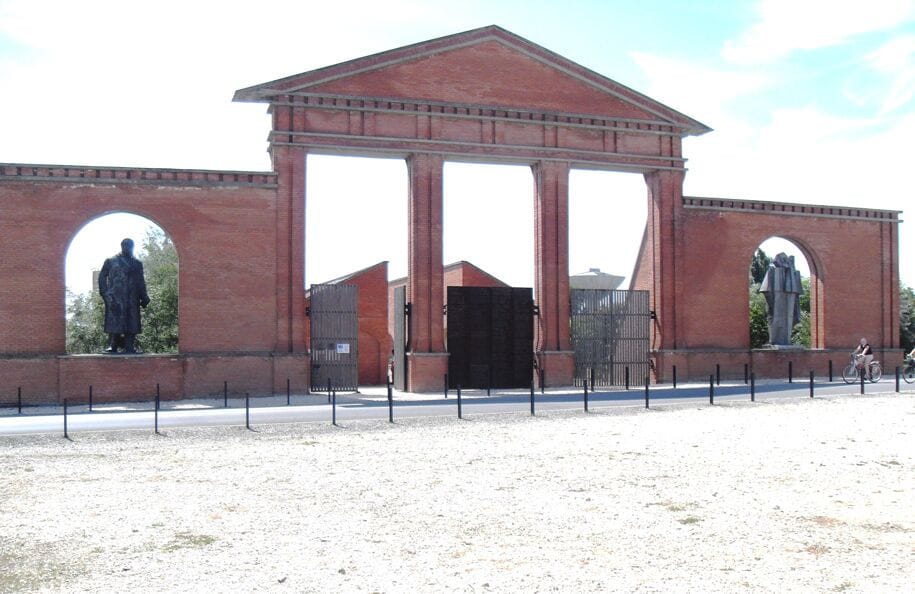
Buda and Buda (translated from Hungarian means “Old Buda”, where the Romans founded the ancient city of Aquincum in the second half of the first century) - originally ancient cities, and Buda is also the capital of the Kingdom of Hungary, located on the western side of the Danube, but since 1873, after the unification of three independent cities: Buda, удbuda, and Pest, located on the eastern side of the Danube, are part of the city of Budapest.
Although the historical Buda and óbuda is a much smaller territory than now, but today both areas more broadly applies the name "Buda", which refers to the entire Western part of Budapest.
The area of Buda is hilly and mostly wooded (with abundant vegetation), occupies a third of the total area of modern Budapest.
Historical Buda is famous for its terrain, thanks to which in Bude there are numerous lookout (observation points) and nature, including natural parks and caves, as well as attractions outside the Tops the best tourist sites of Budapest.
Óbuda is remarkable mainly for its ancient ruins (archeological site) and interesting museums.
The Buda embankment runs along the entire part of Buda on the West coast of the Danube river.
Across the Danube is spanned by bridges connecting the two parts of Budapest - Buda and pest.
In the centre of Budapest, where the main touristic center and the main attractions of the city, over the Danube river are six bridges, each beautiful in its own way. For each of these bridges runs the transport, including both public and equipped with pedestrian areas on both sides of each bridge. Read more about the bridges and embankments of Budapest...
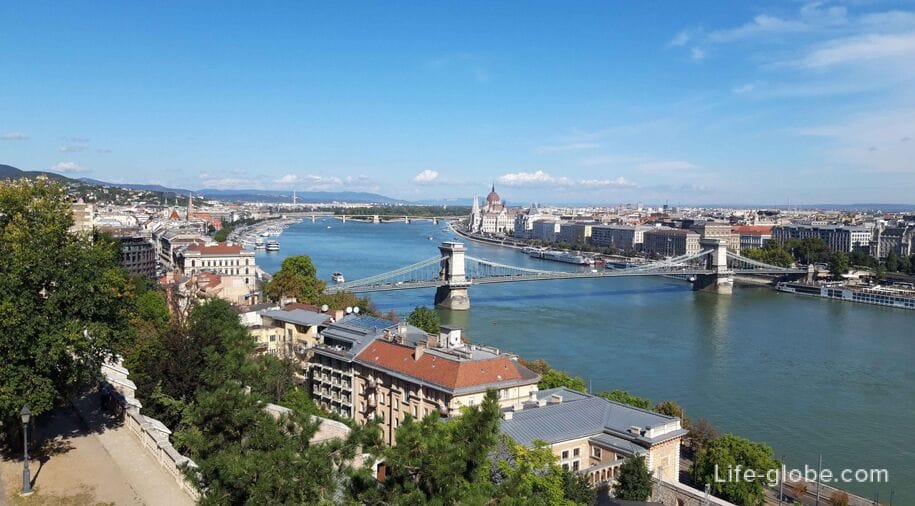
The historic building of the Budapest University of technology and Economics, located at the address: Műegyetem rkp 3, and which is well seen from the opposite - the Pest embankment.
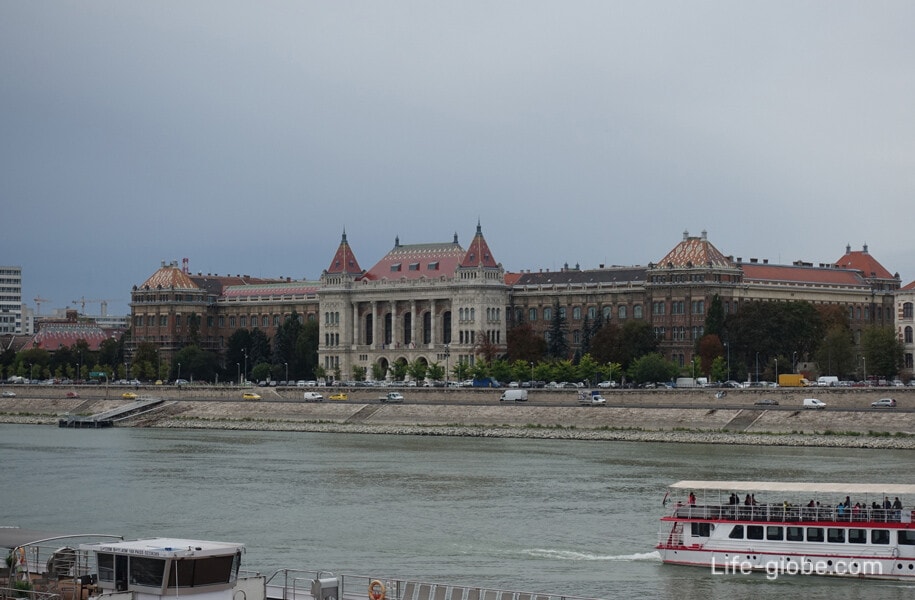
On the Buda side are located some of the famous baths of Budapest, including:
the bath gellért, located in a historic building, which also housed the eponymous 4-star Danubius hotel Gellert offers a restaurant, bar, private Parking, free Wi-Fi and Breakfast included in the room rate;
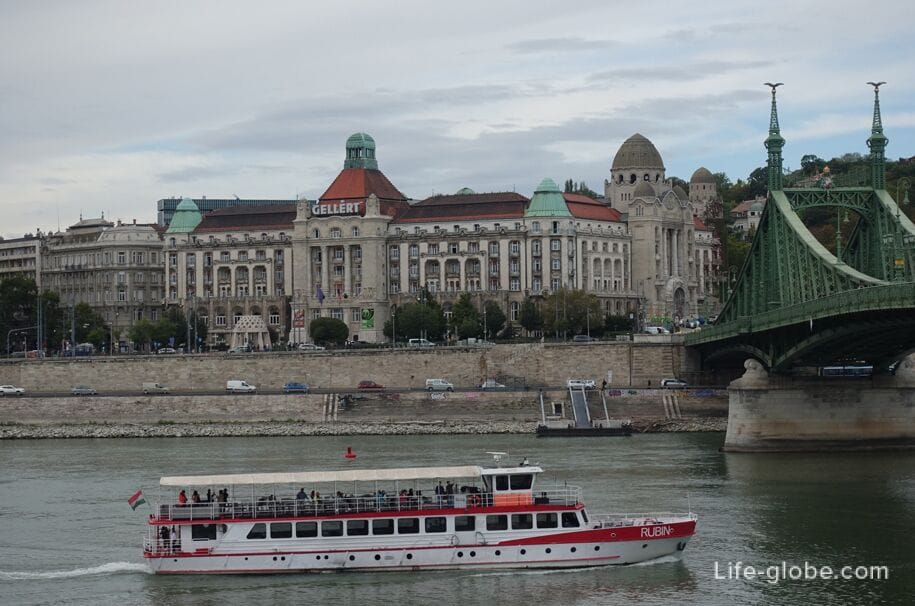
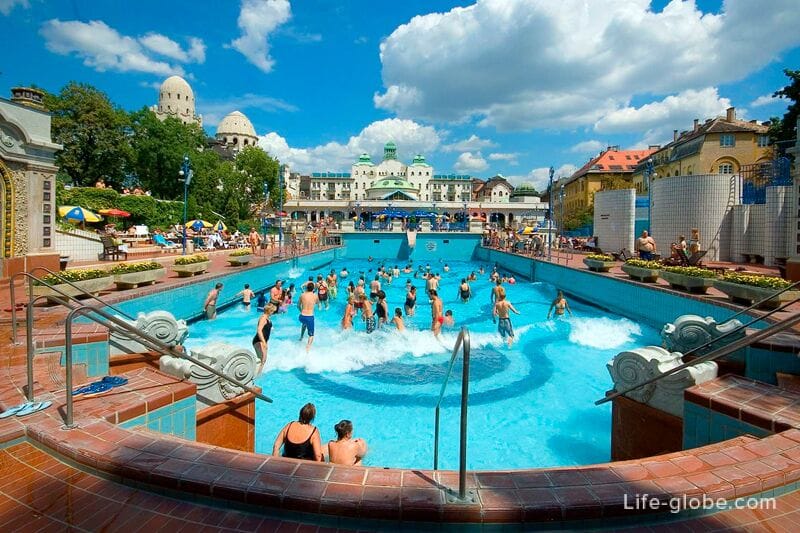
Rudas baths, Kiraly baths, Lukacs baths, the bath of Veli-Bey. Read more about all the baths in Budapest...

Tropicarium - Oceanarium (Tropicarium - Oceanarium) consists of several rooms, in which visitors are freshwater fish, including the home fauna, tropical wildlife and a variety of sea creatures, including sharks, alligators, exotic reptiles and amphibians, little monkeys, birds and colorful fish.
Address aquarium: Nagytetenyi ut 37-43.
The website of the Tropicarium - Oceanarium: tropicarium.
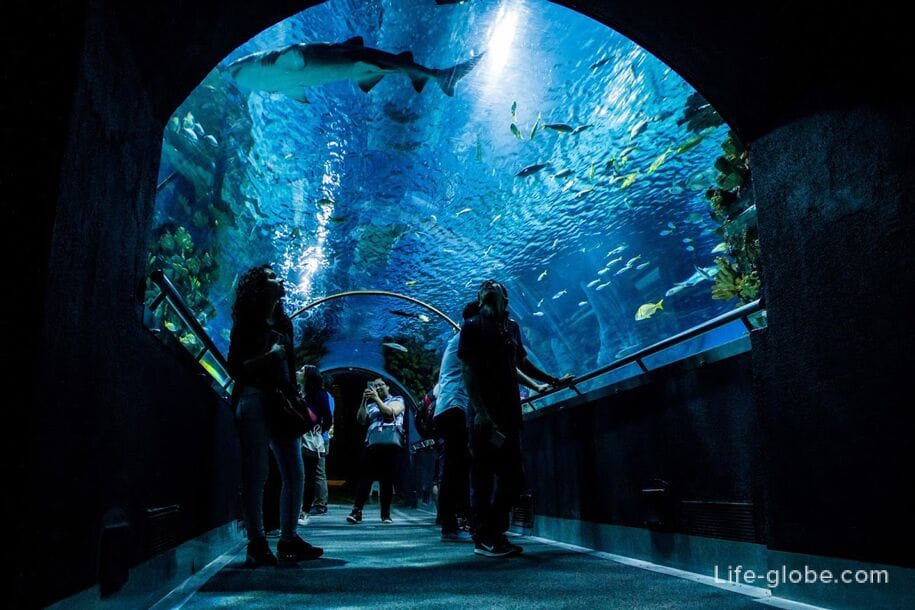
The Gellert hill (Gellert-hegy) is a hill (mountain) with views of the Danube river, with a height of 235 metres.
On the gellért hill is notable for attractions such as the statue of Liberty, one of the symbols of Budapest, the citadel, founded in 1854 and is built on an ancient settlement; the rock Church - the Church of our lady of the Rock or of the Pauline monastery, consisting of two parts: the upper is an ancient cave known as the cave of St. Ivan (later the cave of Lourdes) and the lower artificial stone cavity, located inside the mountain, where the temperature in winter and in summer is 21°C.
At the top of the hill and on its slopes are equipped with several viewing platforms and observation points, which gives a beautiful panorama of the Danube and pest.
In the South-Eastern slope of the mountain there are playgrounds, including a large rollercoaster, which is considered a hidden treasure of Budapest for families with young children. Read more about Gellert hill...
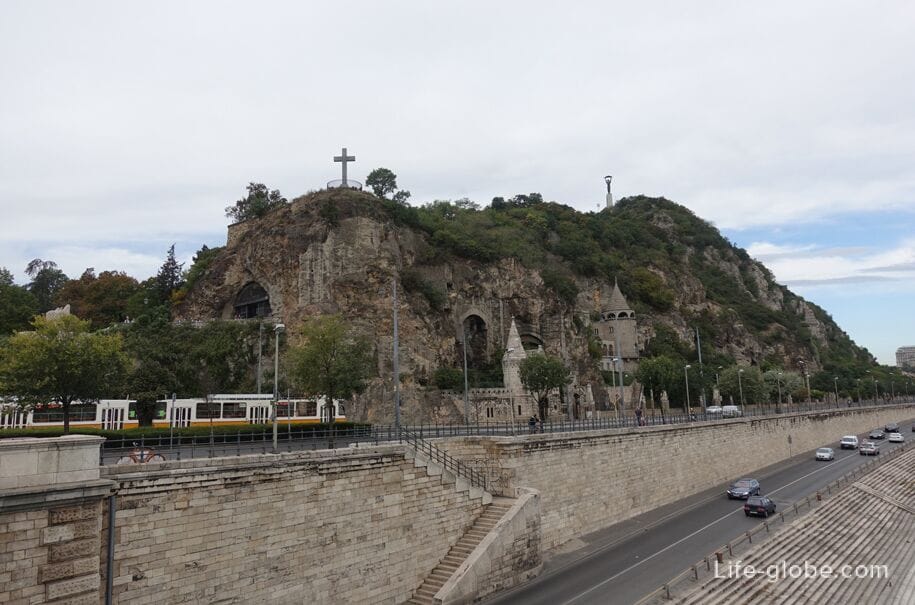
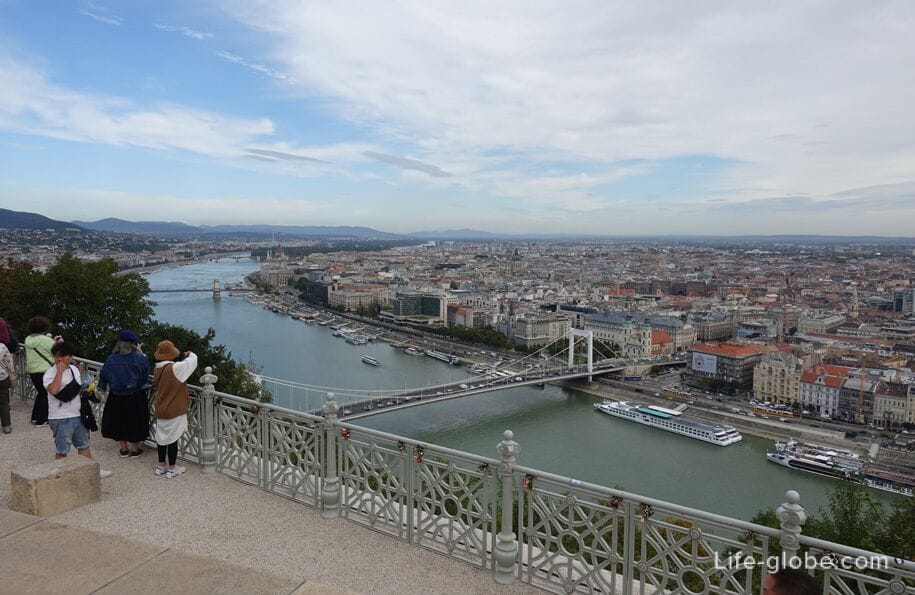

Castle hill or the Buda hills on top of which is one of the best sights of Budapest - Buda castle, which is a kind of city within a city, and a treasure trove of interesting objects, museums and Budapest is a Paradise for lovers of panoramic views.
Buda castle is a historical castle district of Buda, surrounded by medieval, now restored fortified wall, outside of which is the number of objects, originally medieval in origin, narrow streets, along which the monuments of the 17th and 18th century houses and public buildings and squares, museums, monuments, cafes and restaurants.
On-site Buda castle is notable for such objects as: the Royal Palace is the historical castle and Palace complex, once the residence of Hungarian kings; the Fisherman's Bastion, built in neo-Romanesque style between 1895 and 1902 the years, on a site partially destroyed while the ramparts; the Matthias Church with a rich historical past and is the most beautiful and one of the most important churches of Budapest; the St. George's Museum "Labyrinth", the Museum "Hospital in the rock", etc. read More about Buda castle and all its attractions...
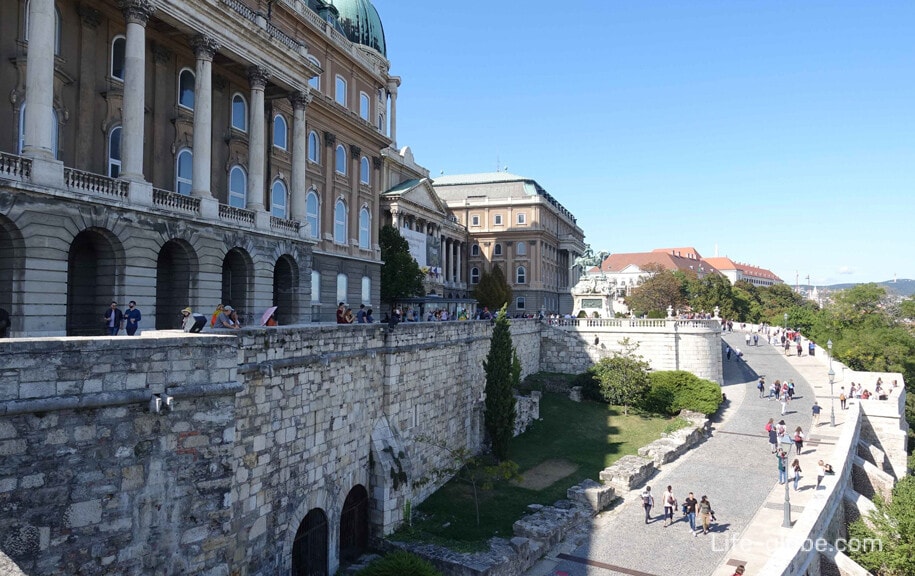
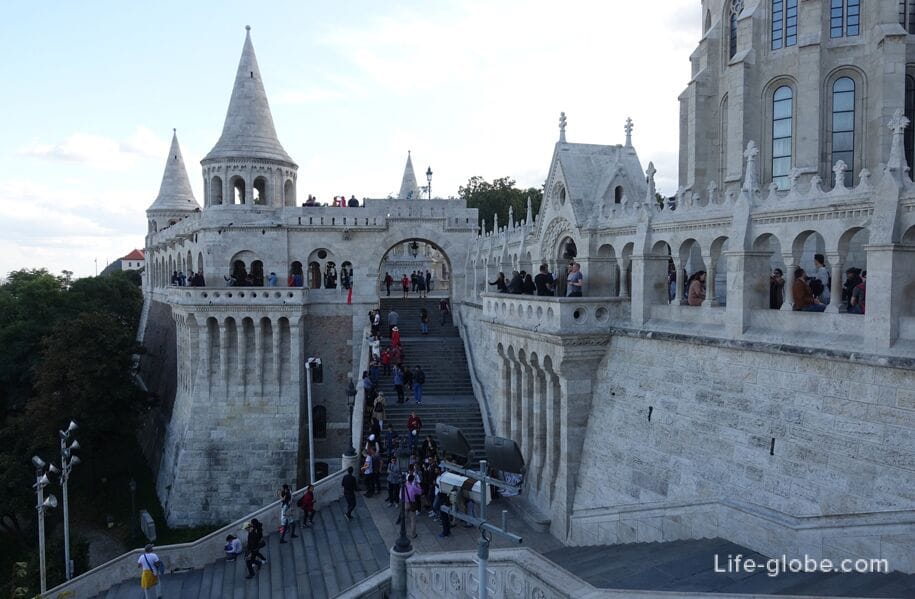
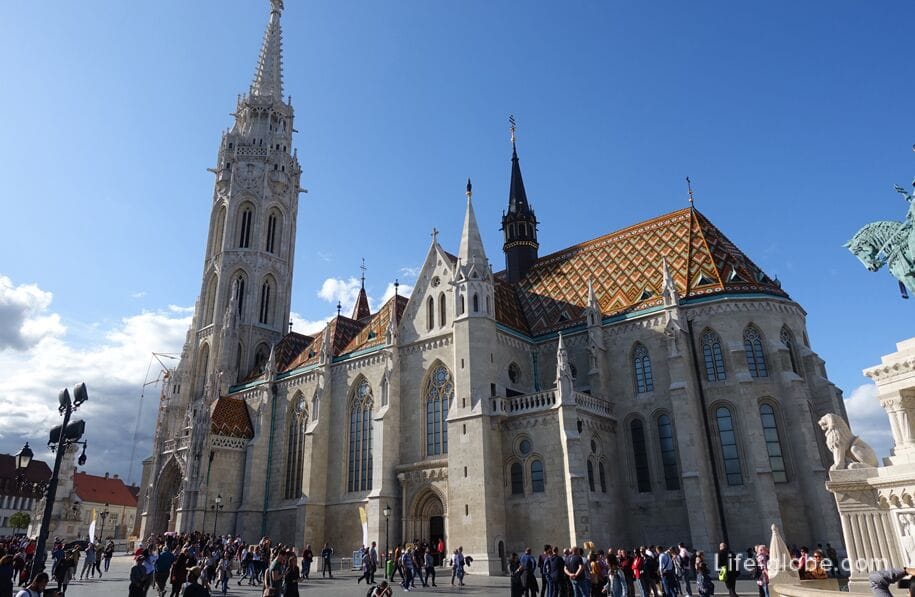
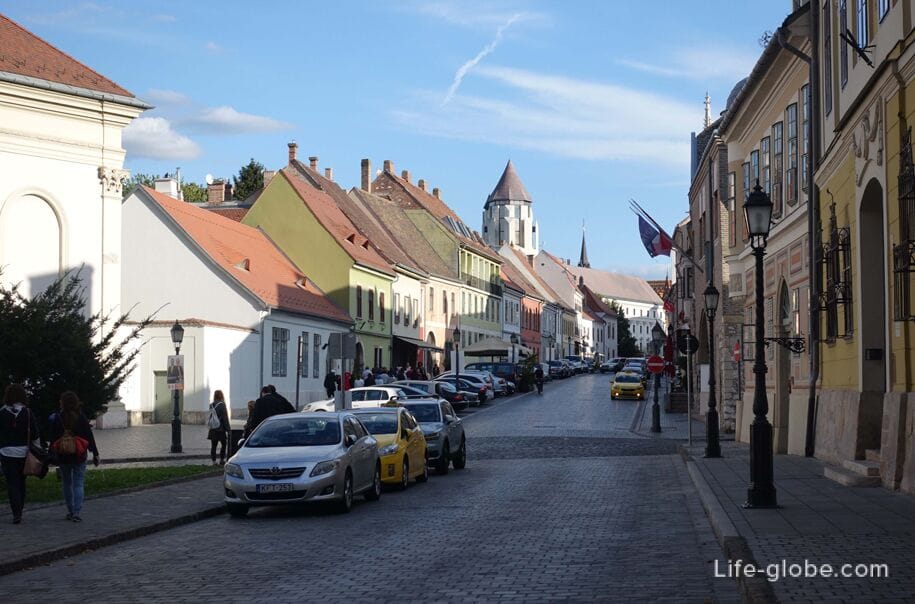
On the funicular (Budavari siklo) of the 19th century, you can climb the Castle hill.
The lower cable car station located at the West side of Chain bridge, near the Zero kilometer tunnel under the Castle hill, on the Adam Clark square (Clark Adam ter).
The upper cable car station is located on St. George's square on Castle hill.
The website of the cable car: bkv.
Photo of the lower station of the funicular

Photo of the upper cableway station in St. George's square
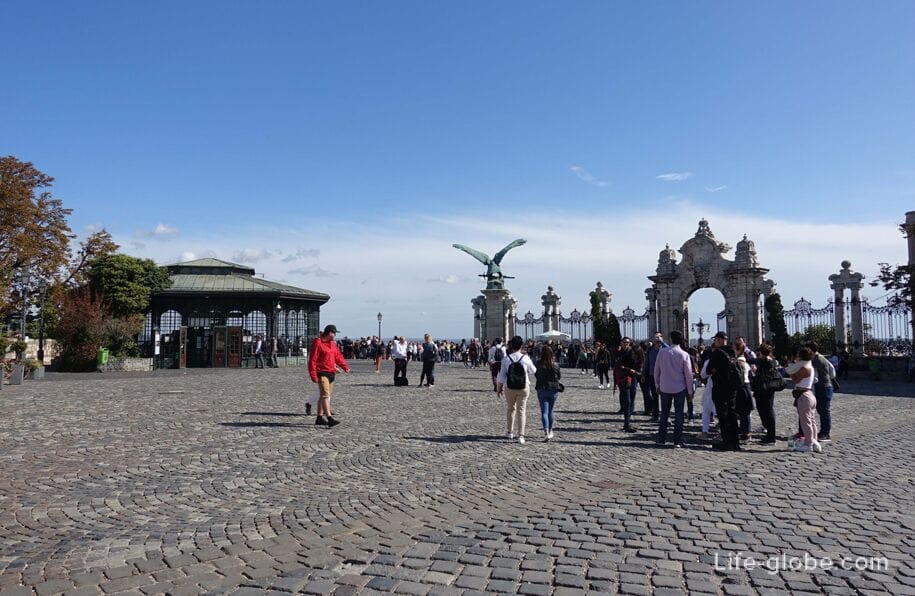
Ropeway gondola lift (Zugligeti Libegő), near the upper station of which is located the observation tower Elizabeth.
Website cable car: bkv;

Children's railway is a historic line attraction and is one of the public transport in Budapest.
One of the stations of the road is not far from the tower Elizabeth.
In the station building Huvosvolgy (Hűvösvölgy) is a Museum of the Children's railway (Gyermekvasutas Muzeum), which stores the material and visual memories from the start of construction of the children's railway.
The website of the children's railway: gyermekvasut.
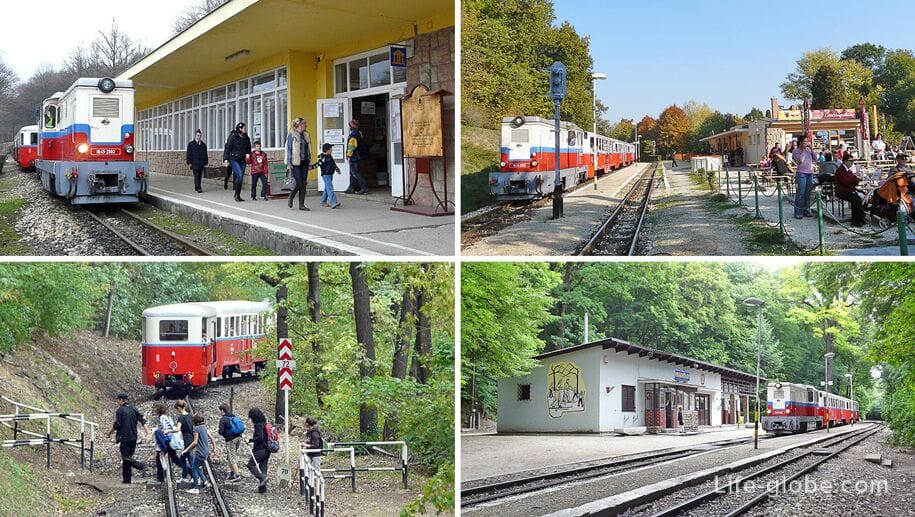
A mountain or a hill Janos / Janos (Janos-hegy) is the highest point and one of the best lookouts in Budapest.
On the mountain is an observation tower with a height of 527 meters, known as the observation tower or the Elizabeth lookout tower Elizabeth (Erzsebet-kilato) and giving a beautiful panoramic view. Admission is free (complimentary).
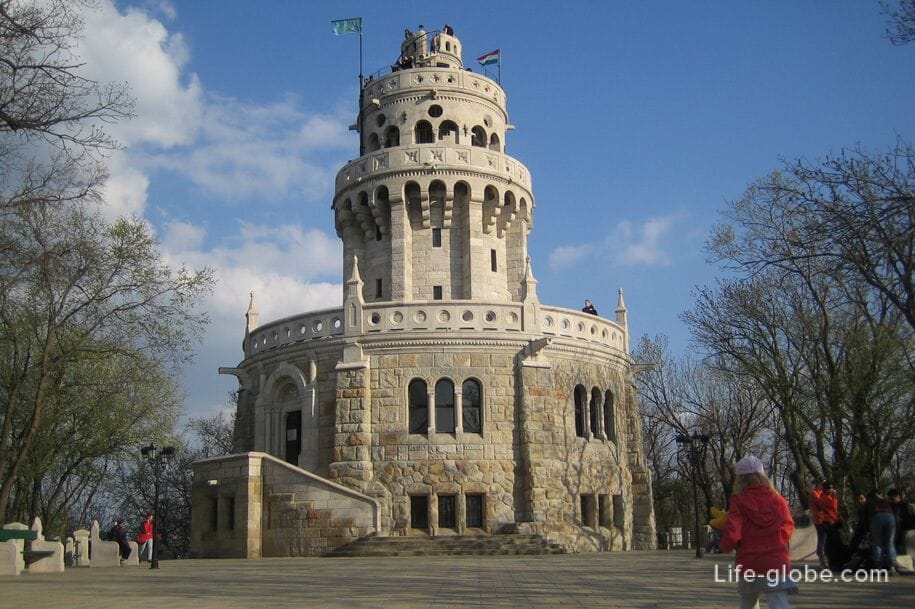
The Catholic Church of St. Anne (Szent Anna-plebania) was erected in 1740 on the site of earlier shrines and is considered one of the best Baroque churches of Budapest.
Address of Church: address: Batthyany ter 7.

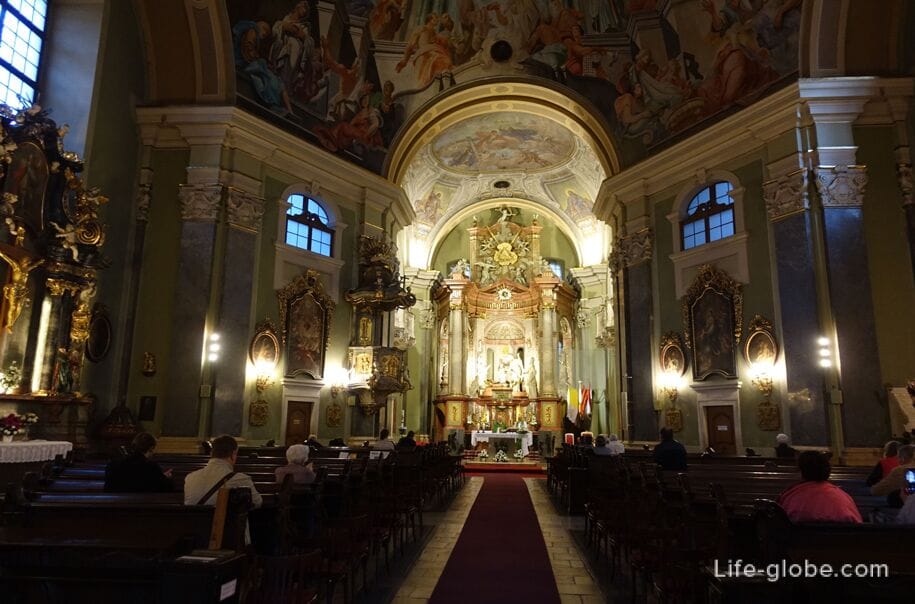
The address of the Church: Szilagyi Dezső ter 3.
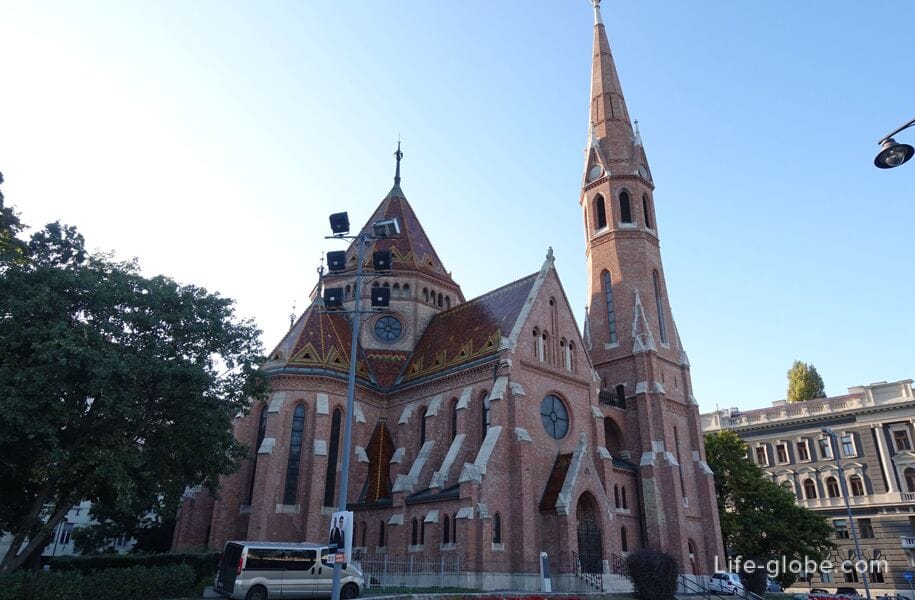
The mausoleum of Gul Baba's Tomb (Gül Baba türbeje) is a sacred place of pilgrimage and also tourist attraction is a complex that includes the terraces, a fountain, flower beds and the tomb of Gul Baba.
Admission is free (complimentary).
Mausoleum address: Mecset u. 14. Read more about the mausoleum of Gul Baba's Tomb...


It is noteworthy in the area of Buda Buda historic building of the hospital Order of Mercy (Budai Irgalmasrendi Korhaz).
The address of the hospital: Frankel Leo ut 17-19.

The first stone of the synagogue behalf of Leo Frankel (Frankel Leo uti zsinagoga), built in the Gothic revival style, was built in 1887. The consecration took place on 8 August 1888. The capacity of the synagogue is 400 seats.
Originally the synagogue was built in the open space to replace 100-year-old synagogue, but in the 1920-ies around the synagogue was built a residential building, so now the synagogue is located in the closed courtyard and is closely surrounded by buildings.
The address of the synagogue: Frankel Leo ut 49.
The site of the synagogue: frankel.
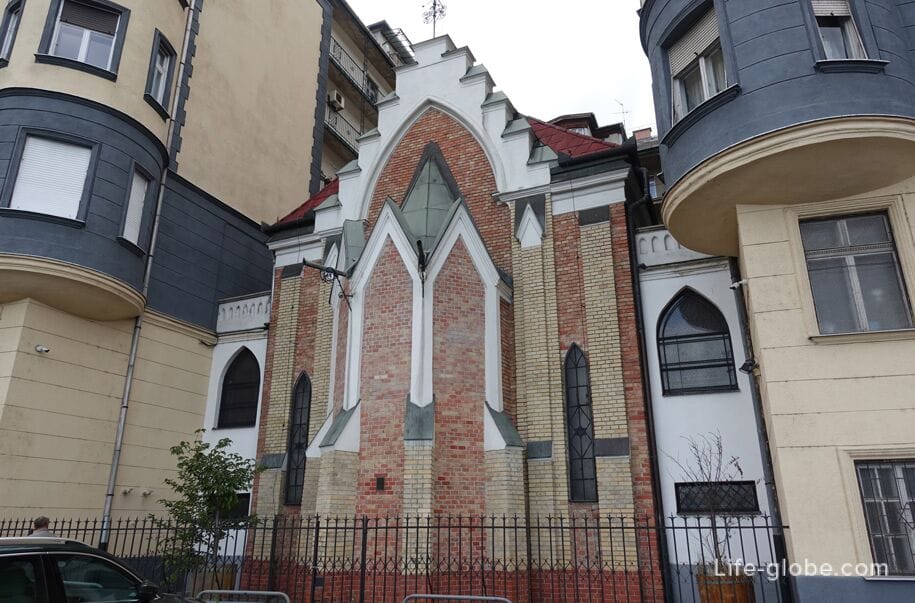
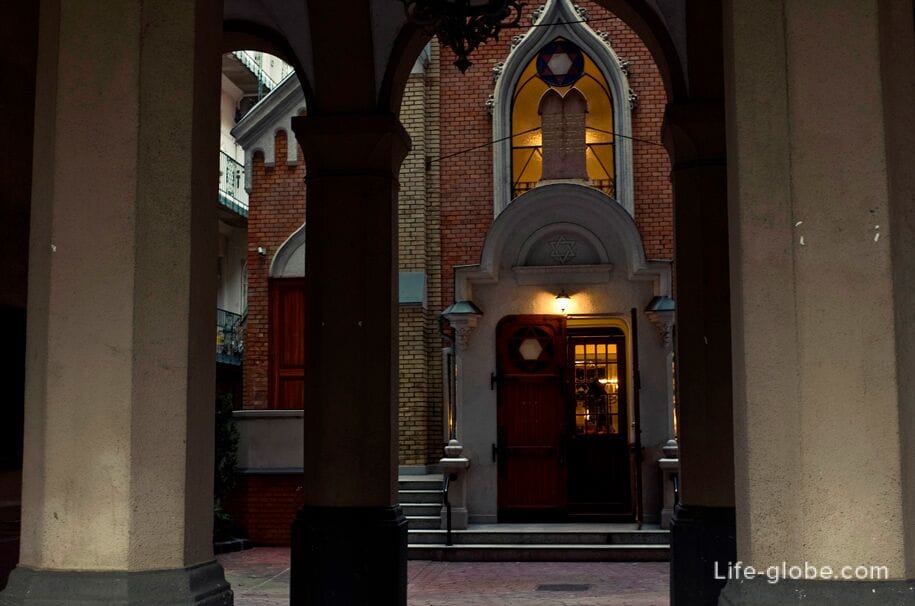
The small parish Church of the blessed virgin Mary (Boldogasszony Plebaniatemplom), located at: Becsi ut 32.

On the Buda side there are two caves.
The temperature in the cave is 11°C - 12°C throughout the year, so in the summer you should dress a little warmer and be sure to come in comfortable shoes.
In both caves you can buy single tickets or combination of both - giving you the right to visit the two caves.
Mountain cave in Her (Szemlő-hegyi-barlang), which is popular among families with children and tourists. In the cave you can also watch movies in the cinema and to visit the interactive exhibition.
Address caves: Pusztaszeri ut 35.
The cave site: dunaipoly.
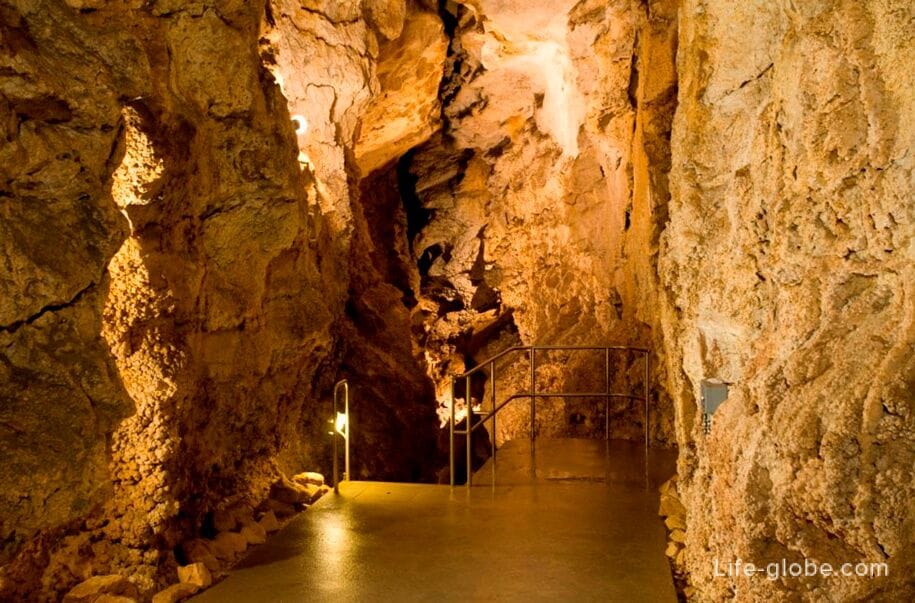
Stalactite cave PAL-Velde (Pal-völgyi-barlang) is the longest cave of Hungary, famous for its stalactites, which was opened in 1919.
A 500-metre walking trail with rock formations will appeal to fans of the underworld.
Some areas in the cave and a steep staircase not suitable for small children (up to age 5 and up to 115 cm are not allowed).
The coordinates of the cave: 47°31'58.2"N 19°00'58.1"E (address: Szepvölgyi ut 162).
The cave site: dunaipoly.

Over time the site of the present Church of the Holy apostles Peter and Paul Church (Szent Peter es Pal templom) and in its vicinity there were a few ruined temples.
The construction of the nave of the present parish Church was begun in 1735. The first Foundation stone was laid on 28 June 1744. Construction work was completed in 1749.
The main altar of the Church is made of red marble in the years 1773-1774, with the statue of Christ the teacher. On both sides of the altar are statues of the Holy apostles Peter and Paul.
To the left of the main altar is a marble fountain of baptism, and the pulpit in the Rococo style, to the right is the image of St. Borromeo. The side altars dedicated to St. Julianna, St. Anne and Holy Cross.
The Church's address: Lajos u. 168.
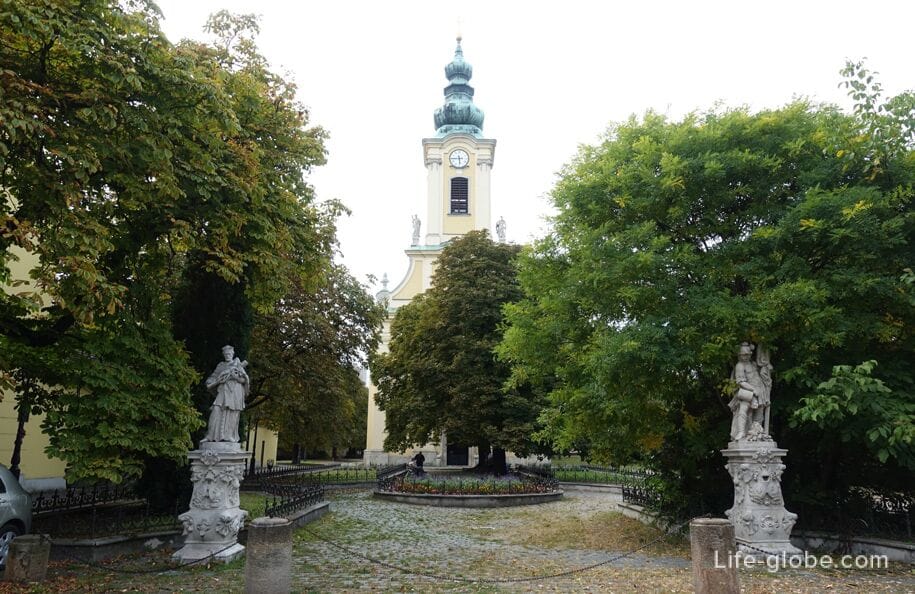
The Museum also known as Museum of Commerce and hospitality (Magyar Kereskedelmi es Vendeglatoipari Muzeum) and its collections tell the history of the trade (domestic wholesale and retail, international, financial, etc), hospitality industry (hotel business), as well as the tourism industry, presented as an interactive exhibition.
The Museum has both permanent and changing (temporary) exhibitions.
Address: Korona ter 1.
Museum website: mkvm.
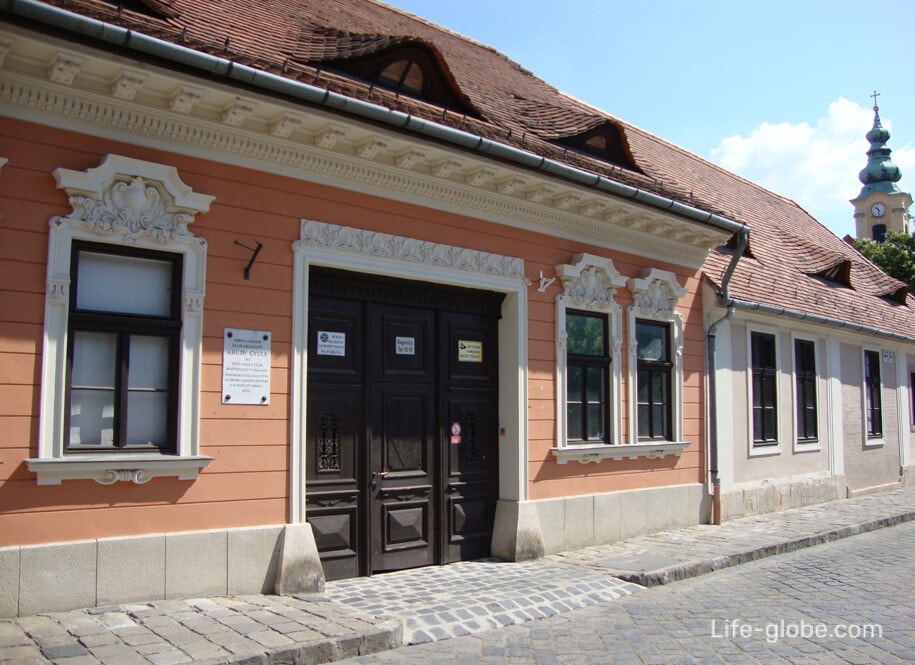
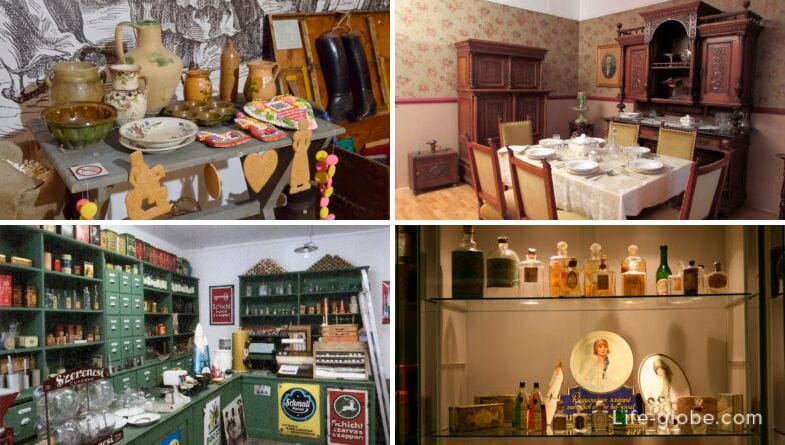
Before the square was the entrance to the Roman settlement Aquincum.
St. Florian's square (Florian ter) is one of the main squares of Obuda in the business and shopping centre Florian (Florian Business Center), as well as parkland and is surrounded by several attractions:
- votive altar (Fogadalmi oltar), which is a sculptural group, also known as the altar of St Florian, since this is the most famous of the saints depicted in the monument.
Initially, the altar was erected between 1758 and 1763 over the years, as a symbol of protection from earthquakes, floods, fires and the plague.
Left is a column with a statue of St. Florian, the right column is crowned by a sculpture of St. Philip Norris, and in the centre, between two pillars, depicts Saint Charles Borromeo, kneeling next to angel. The group of statues surrounded by 50-inch cast-iron railings on a 30-centimeter Foundation;
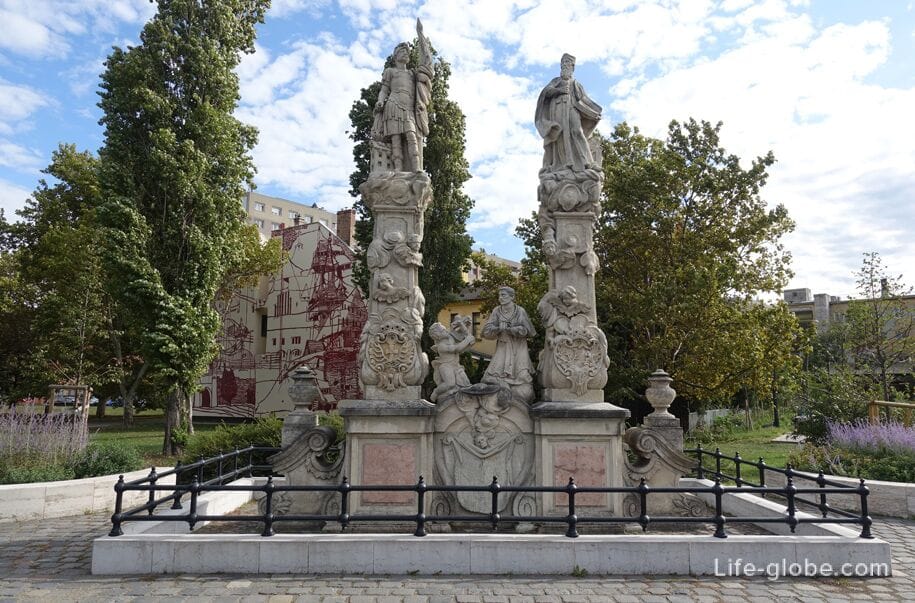
- reformed Church óbuda (Obudai reformatus templom), known as the old Calvinist prayer house in Budapest.
Date of construction of the Church - 1785 - 1786 years.
The address of the Church: the kálvin köz 4;
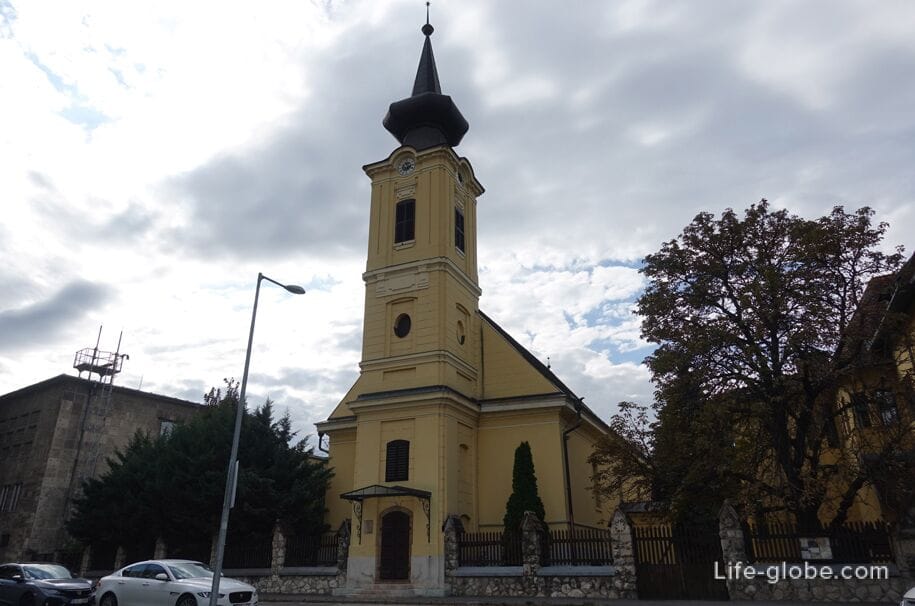
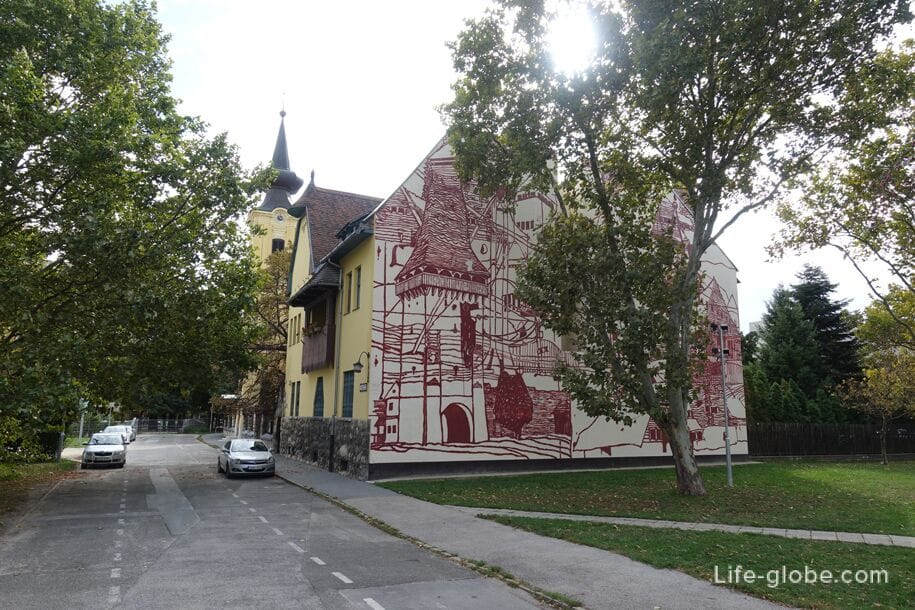
- ruins of ancient Roman buildings - ancient Aquincum. (Okori rjmai epületmaradvanyok), located in the open air in the square;
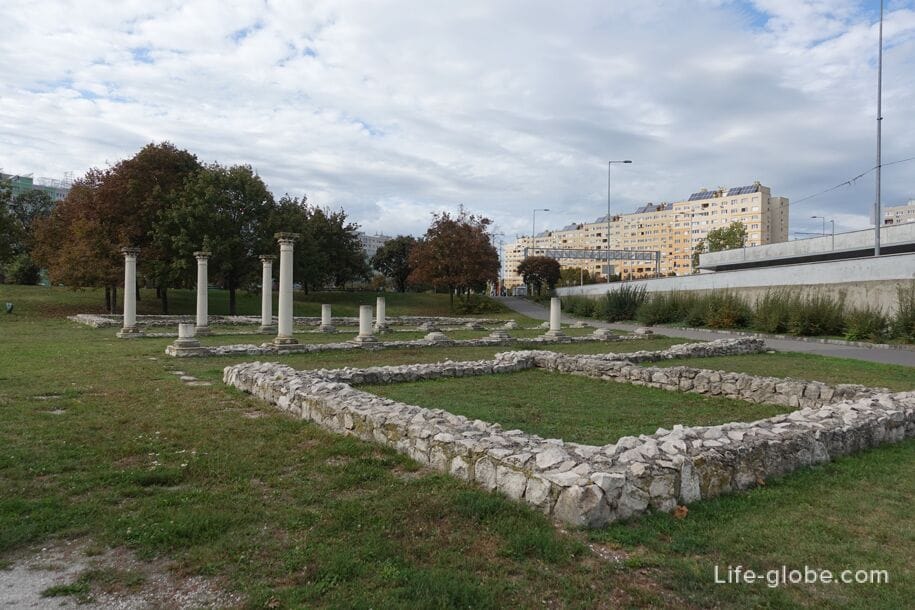

- ruins of Roman baths (Roman Bath Museum) - the second part of the ruins, which once also formed part of the ancient city of Aquincum. The remains located under the bridge.
Baths of the legionary fortress was found in 1778, during the first archaeological excavations in Aquincum. Monumental structure (120 to 140 meters) lying on the intersection of two main roads of the fortress. The building presumably was built in the 2nd century and subsequently rebuilt several times. The bath complex offers visitors (the Roman legionaries - soldiers) gymnasium (palaestra), cold, warm and hot pools, saunas, steam baths and spacious rooms with Underfloor heating. Here the soldiers had many opportunities for training and swimming.
Visit the ruins of the free.
Opening hours: from 1 April to 31 October from 10:00 to 18:00; from 1 November to 31 March, when the weather is dry and the surface is not slippery, from 10:00 to 16:00 hours. The Baths Museum is closed on Mondays.
Public transport: buses 9, 34, 106, 109, 111, 134, tram 1 (stop "Florian ter").

Kiscelli Museum (Kiscelli Muzeum) - the historical Museum, located in the eponymous castle in the Baroque style, built in the 18th century for the monastery of the trinitarios.
During the history some time in the walls Kiscelli housed a barracks and then a hospital. Currently a branch of the Budapest history Museum.
The exposition of the Museum, consisting of nearly 3,800 items dedicated to modern and contemporary history of Budapest (18-21 centuries), as well as the lifestyle and culture of the residents of the area.
Address: Kiscelli u. 108.
Museum website: kiscellimuzeum.
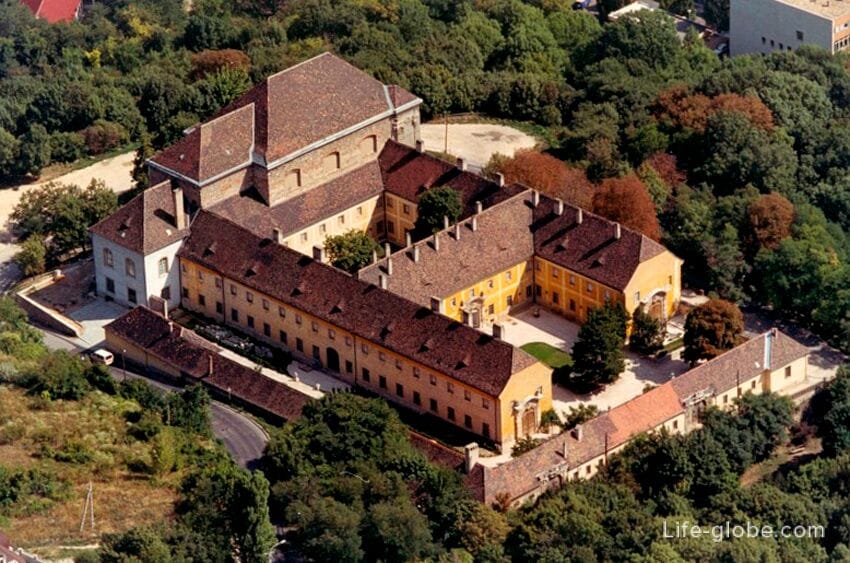
Palace of Zichy (Zichy-kastely) - two-storey building in the Baroque style, originally built on the ruins of a Church count miklós Zichy in the years 1746-1757.
Outbuildings of the Palace complex was completed a little later, between 1754 and 1757 years.
Staircase and chapel of the main building was decorated with frescoes, and their furnishings contrasted with the aristocratic atmosphere of the castles of those times.
After the death of miklós Zichy his widow donated the property to the crown in 1766, in exchange for an annuity.
Since the restoration of the Palace in 1974, the main building functioned as a community center.


Currently, the buildings of the Palace complex is located:
- Museum of óbuda (Obudai Muzeum), which is a historical Museum of óbuda with a collection of furniture, appliances, coins, toys, tools and other items including household, narrates the history and culture of the area.
Museum website: obudaimuzeum;
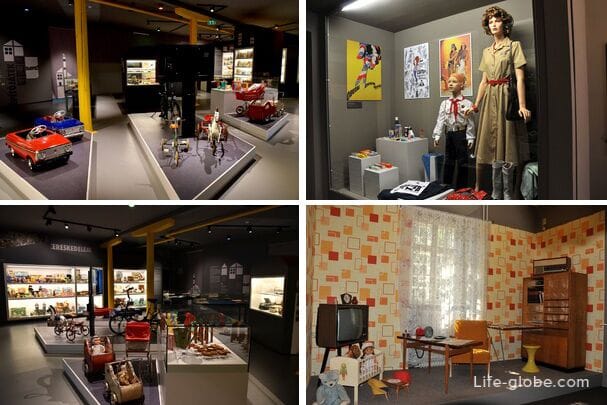
- memorial Museum of Lajos Kassák (Lajos Kassak Museum Emlekmuzeum), which is a branch of literary Museum named after Petofi and preserving the material and intellectual legacy of Hungarian writer and poet, recognized as a versatile and outstanding figure of the Hungarian avant-garde of Lajos Kassák (1887-1967) was.
In addition to constantly collections of the Museum hold exhibitions, organize conferences, lectures and programs Museum education.
Museum website: kassakmuzeum;
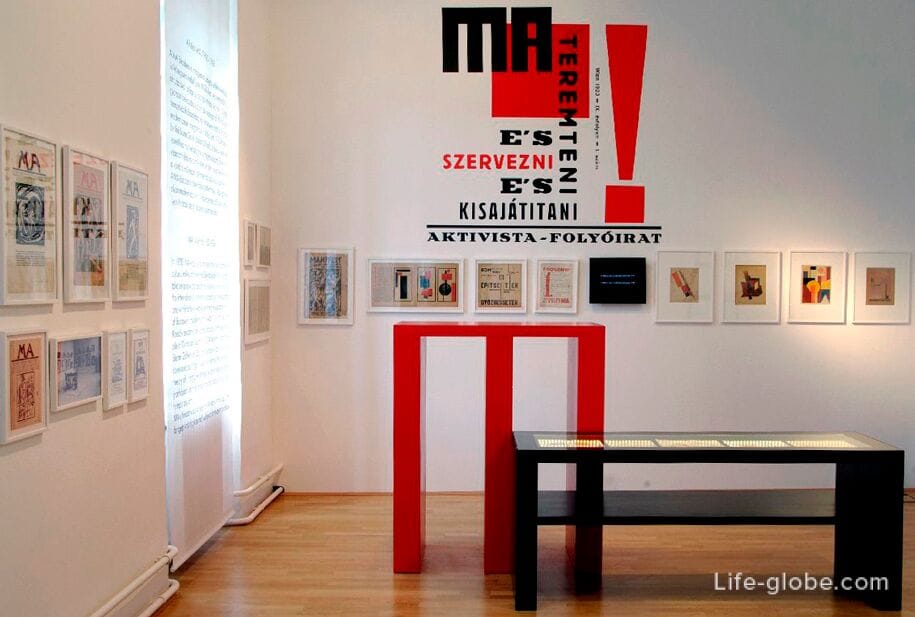
- Museum of Victor Vasarely, also known as the Museum of fine arts Vasarely (Vasarely Museum), which is a permanent exhibition of works by Hungarian-French artist Victor Vasarely (1906-1997 years), which also has temporary (changing) exhibitions.
Museum website: vasarely;
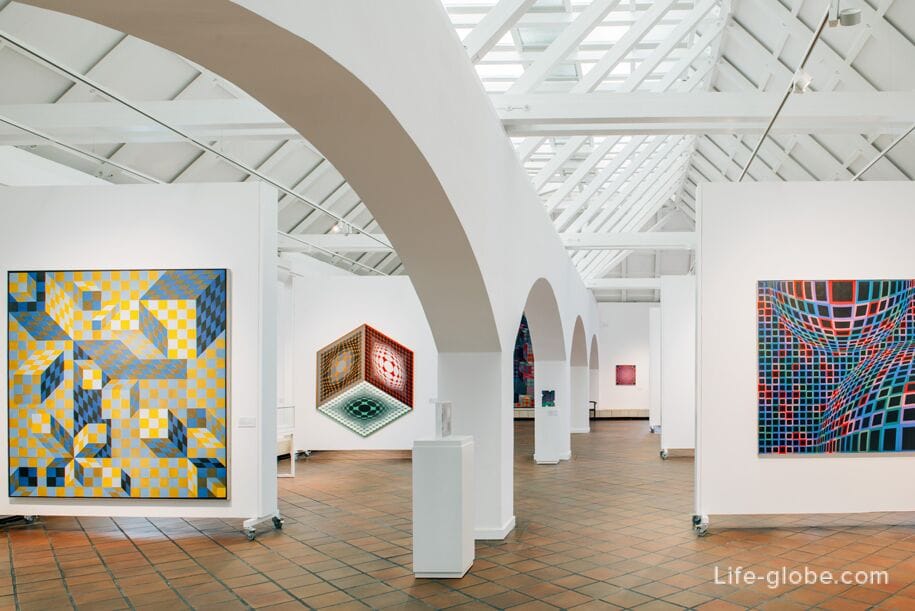
- concert hall "the Garden Kobuchi" (Kobuci Kert) in the courtyard of the Palace, which hosts various performances and a café.
Website: kobuci.
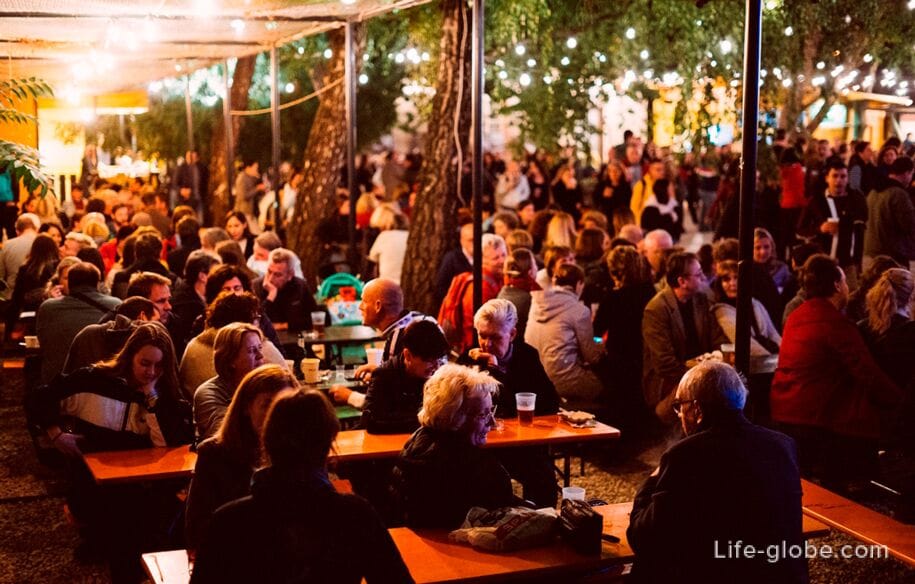
The address of the Zichy Palace and museums: Fő ter 1.
Hercules Villa (Hercules villa) is like some other Roman ruins in Budapest, to the archaeological Park and the Museum Invincom, but located at the address: Meggyfa u. 21.
Hercules Villa is the remains (ruins) of a wealthy Roman residential building, a high-ranking administrator.
The core of the building was probably built in the first half of the 2nd century. At the beginning of the 3rd century, when, apparently, a significant part of official government functions were transferred to the "officers" of the Military town, the building was expanded and equipped with heated floors and mosaic ornaments. A separate room was also decorated with mosaics. The walls were decorated with frescoes.
Website Villa Museum: aquincum.
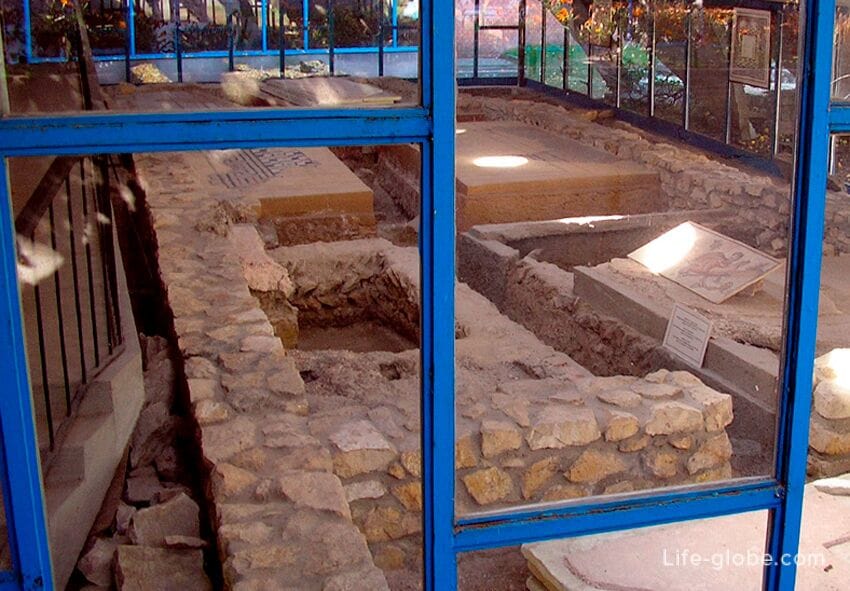
Archaeological the Aquincum Museum (Aquincumi Muzeum) is in ruins (archaeological sites) of the ancient Roman city of Aquincum., which presents jewelry, glassware, metal tools and wall paintings relating to the life of the ancient Romans, once living in Aquincum.
In the outdoor area of the Museum are the remains of the city, including courtyards, baths, markets, shrines, large columns, sculptures and a stone sarcophagus.
Main the Aquincum Museum is located at: Szentendrei ut 135.
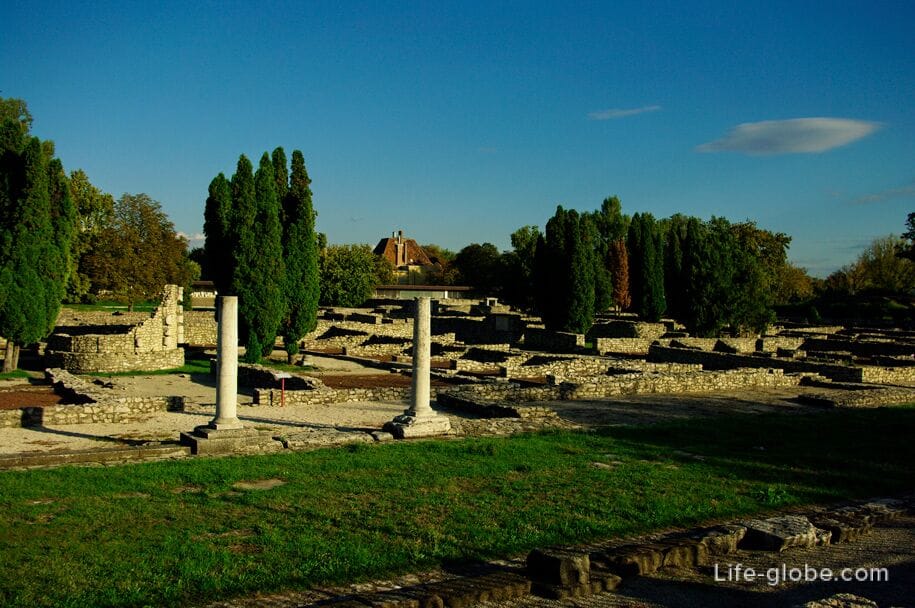
In addition to this part of the Museum, Aquincum includes and other ancient sites located in separate areas of óbuda, which include the Roman baths and the Villa Herkules as described previously in this article, and:
- ruins of the civil amphitheatre in Aquincum (Aquincumi polgarvarosi amfiteatrum), located at: Szentendrei ut 150. The amphitheatre was built between 250 and 300 years BC;
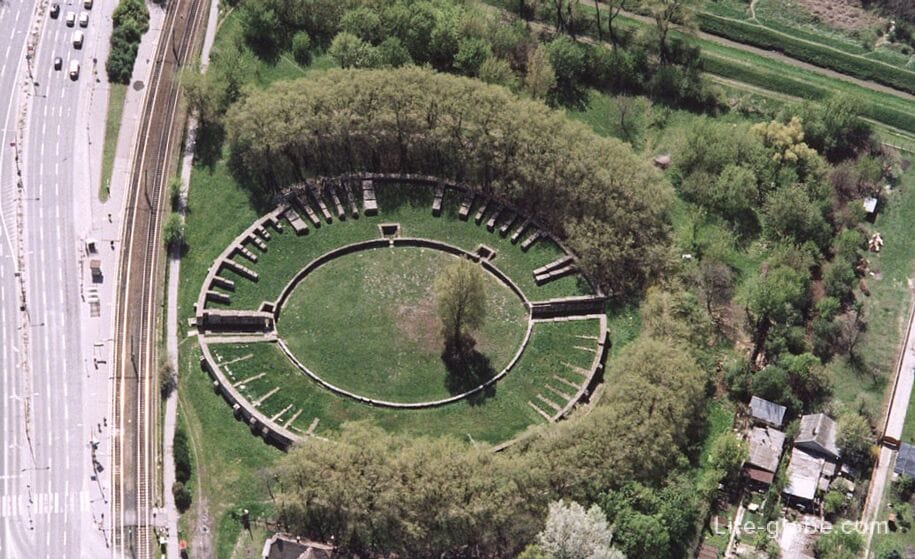
- the ruins of the larger military amphitheatre in Aquincum (Katonavarosi amfiteatrum), located on the street Pacsirtamező. This amphitheatre was built around 145 years, during the reign of the Emperor Antoninus Pius.
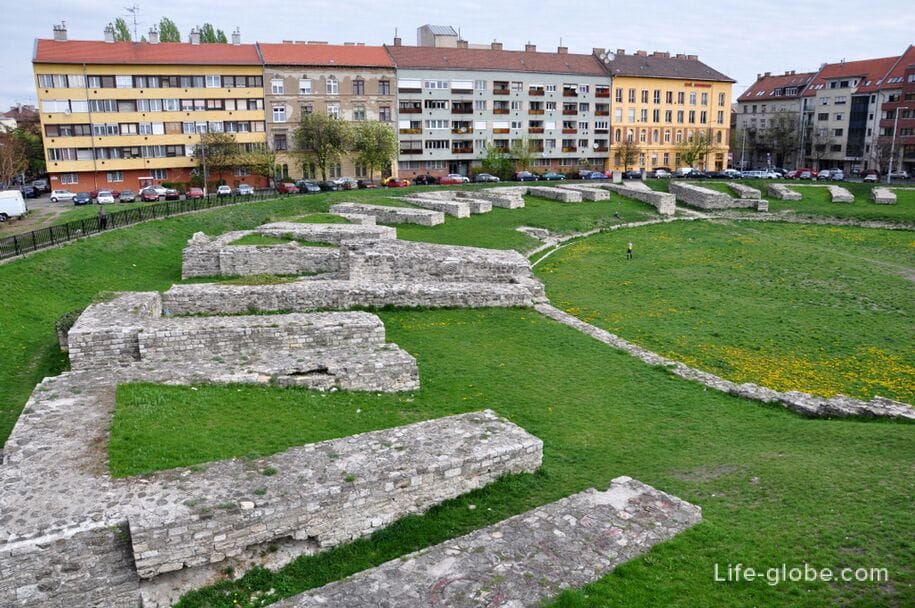
The website of the Museum of Aquincum: aquincum.
Business Park (Graphisoft Park) was created, starting in 1998 in the southern part of the territory of the former Budeschego gas plant, primarily for IT.
The Park is notable for the architecture and the landscape. There is a small pond, sculpture, including statue of Steve jobs, places for rest and walks.
Some preserved buildings of the gas plant (Regi Gazgyar) was protected as monuments, others have found a second life and new function - they were restored and landscaped.
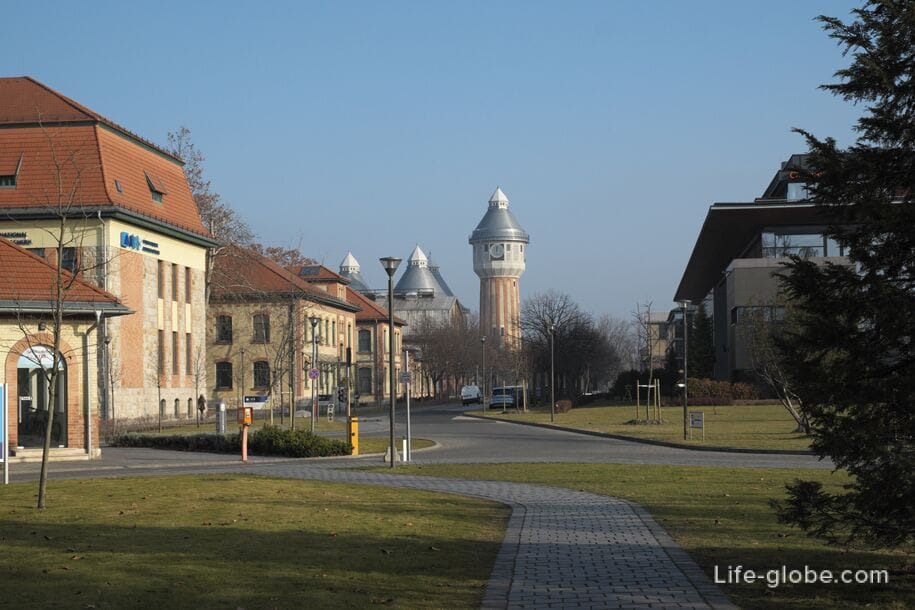

The island of Obuda, also known as Haidari and island dockyard (Obudai-sziget, Hajogyari-sziget) is a large island in the waters of the Danube, in the territory of óbuda.
The island is known, first of all, thanks to the availability of large recreational areas, Playground with slides and high as the venue for the annual music festival "Sziget" (Sziget).
"Sziget" - the annual festival of music, culture and art, which lasts for 7 days, programs operate 24 hours a day, has been held since 1993 and is the fifth largest festival in the world and one of the largest music events in Europe. During the festival you can stay in campsites, right on the island.
The website of the festival: szigetfestival.


Park Museum memento (memorial Park, Memento Park) is located on the southern outskirts of Buda, outside of the tourist centre of Budapest.
The Park was established as a Museum under the open sky, project AKOS of Aleida and opened in 1993.
Quote of the architect of the project: "This Park is about dictatorship. And at the same time, because it is possible to speak, describe and build, it's about democracy. In the end, only democracy can give the opportunity to think freely about dictatorship."
In the Park of sculptures (monuments) of the Communist era between 1945 and 1989, including allegorical monuments of "Hungarian-Soviet friendship" and "liberation", as well as statues of famous figures of the labor movement and the soldiers of the red army. There are statues of Lenin, Marx and Engels, and several Hungarian Communist leaders.
Address Park Museum: 22nd district (southern Buda), Balatoni ut Szabadkai ut.
Website Park Museum: mementopark.
